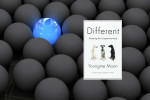The Innovator’s Solution

Product managers must break free from patterns which make them susceptible to disruption from new entrants. To successfully introduce new products, product managers need to use jobs-to-be-done segmentation rather than product- or customer-based segmentation.
The Innovator’s Solution by Clayton Christensen
In Innovator’s Solution, Clayton Christensen introduces the famous “milkshake” case study which spawned the jobs-to-be-done method of customer segmentation. This book brings together all of Christensen’s key theories and themes: why growth is difficult, why incumbent companies get disrupted, how disruption works, and how to segment as to avoid being disrupted by new entrants.
The Growth Imperative
Probably the most daunting challenge in delivering growth is that if you fail once to deliver it, the odds that you will ever be able to deliver it in the future are very low.
The need to grow is at the core of Christensen’s problem statement. Because stock prices already reflect the growth of existing and new lines of business, convincing investors to drive prices even higher requires delivering unexpected levels of new business growth. This is the key driver which pushes managers to find new, unexpected opportunities for growth. Although equity markets demand growth, most managers are unsure how to achieve it. Moreover, Christensen notes that once growth stalls, history shows that it is nearly impossible to reignite.
Much of Christensen’s writing focuses on the idea that growth becomes elusive at a certain point in a company’s lifecycle and it’s at that same point that companies become very vulnerable to disruption by new entrants.
The Forces that Shape Innovation
Most ideas are moved along by mid-level managers who are highly incentivized to only choose and back business ideas which have a high chance of success.
Although innovation is frequently viewed as being governed by random chance, Christensen believes that the people who are in charge of selecting and shaping innovations and the forces that act upon them are the key to increasing the odds of success. This selection process favors quantitative data related to existing customers and known problems. New ideas are shaped to look like previous ideas which won funding.
The problem is the shaping process. Potentially innovative new ideas seem inexorably to be recast into attempts to make existing customers still happier.
The performance curve
The concept of the performance curve underlies much of Christensen’s thinking about growth and business longevity. He says that as products begin to mature along a performance curve throughout their lifecycle. As they hit the part of the curve where the product begins to over-serve its target market, an inflection point is reached and the basis of competition changes. Once this happens, there is a segment of the market that is no longer willing to pay for improved performance and is ready to purchase “good enough” product offerings.
Competing against non-consumption
The key to finding disruptive footholds is to connect with a job in what initially will be small, nonobvious market segments–ideally, market segments characterized by nonconsumption.
This is an important idea in Christensen’s theory and is a blind-spot to many companies. Ignoring the segment of the market which is doing without a particular product or service means ignoring the opportunity to provide a “good enough” solution to a group of customers who have never had the wherewithal to get their problem solved.
Disruptive Innovation
Christensen covers the Disruptive Innovation Model which was introduced in the Innovator’s Dilemma. The core of the theory is that “in every market there is a rate of improvement that customers can utilize or absorb.” Once a company provides products which exceed this performance level, they become susceptible to disruption by low-end competitors who can offer a “good enough” solution and slowly make their way up-market. When this occurs, the incumbents are happy to give up less profitable customers to the new entrants and focus on their upper tier, highly profitable segments.
Christensen identifies two types of business circumstances: sustaining and disruptive. In sustaining circumstances, “the race entails making better products that can be sold for more money to attractive customers.” Conversely, in disruptive circumstances, “the challenge is to commercialize a simpler, more convenient product that sells for less money and appeals to a new or unattractive customer set.”
Jobs to be Done
Managers often segment markets along the lines for which data are available, rather than in ways that reflect the things that customers are trying to get done.
Market segmentation which focuses on the attributes of a customer does not establish a relationship of causation. A customer’s attributes do not cause them to purchase or select one product over another. It’s the customer’s circumstances, or “job to be done” that cause them to begin seeking a solution. As Christensen puts it, “the critical unit of analysis is the circumstance, not the customer.”
Thinking in terms of attributes of known customers and identifying new features to add to an existing product are hallmarks of sustaining innovation. Disruptive innovation, on the other hand, is best served by focusing on the job the customer is trying to do. When a job to be done has been identified, one of the ways it can typically be addressed is to do nothing (i.e., non-consumption). In Christensen’s view, this is a strong signal that there is a disruptive opportunity.
Christensen calls this a “launch pad for subsequent growth” because an initial foothold in a market can spawn a long series of sustaining innovations on the platform. He gives the example of multiple Sony products which were footholds: the pocket transistor radio, the portable black-and-white TV, videocassette players, portable video recorders, the Walkman, and 3.5 inch floppy disk drives. Each of these solved a problem for a large group of people who were coping with “awkward, unsatisfactory means.”
There are a number of factors working against jobs-to-be-done segmentation: fear of focus (the more a product is focused on solving one job perfectly, the less likely it is to be hired for other jobs); demand for quantification (available data is organized around products, customers, and organizational units, not the circumstances customers find themselves in); the structure of retail channels (distribution channels are attribute focused and group products by category); advertising spend is geared towards demographic segments (again, not focused on jobs).
Customers & channels
It’s relatively easy to find customers for low-end disruption. They are current users of mainstream products who seem disinterested in offers to sell them improved-performance products.
A new-market disruption is an innovation that enables a larger population of people who previously lacked the money or skill now to begin buying and using a product and doing the job for themselves.
Finding the non-consumers and those over-served by top tier technology applications is at the heart of Christensen’s theory. In addition to finding these customers, it is important to convince your channel partners to support you in pursuing the new opportunity. Often, a new distribution channel is required to deliver the “good enough” solution to new customers since established channels are typically focused on more profitable, upstream products.
Modularity and interdependence
Christensen charts the course of innovation lifecycles and notes that when product features and performance are in the “not good enough” phase for a given tier of the market, companies must compete by making the best possible products. In these cases, products are integrated with proprietary, interdependent architectures because this gives the highest degree of control over the performance characteristics of the product. Once companies overshoot the performance requirements of their customers in a given segment, the product becomes “commoditized” as customers are no longer willing to pay a premium price for improved functionality.
At this point, modularity becomes the winning integration strategy. Since increased performance no longer pays off, manufacturers can now loosen their architecture to take advantage of modularity, thus beginning to use third party components to build their solutions. Christensen discusses this in a chapter on outsourcing and makes the point that the “core / non-core competency” distinction is a false one because the answer changes throughout the product’s lifecycle. When modularity becomes the desired strategy, what used to be a core competency in an interdependent architecture shifts to a modular architecture with partners providing the modular components.
Funding for disruptive ventures
Anything that cannot promise to close the growth by becoming very big very fast cannot get through the resource allocation gate in the strategy process.
When selecting funding for disruptive ventures, Christensen advises to get money that is “patient for growth, but impatient for profit.” Disruptive innovations must be proven quickly through market growth, proving that they can be self-sustaining. Funding which puts a premium on growth will demand that new business opportunities be large enough to beat analyst estimates and result in sufficiently large revenue growth. This typically results in business ideas which are very similar to those which are already in the market serving existing customers. However, new ventures need to be self-sustaining (i.e., profitable) to prove themselves so that they can be set off on a trajectory for success.
Why managers fail to take advantage of innovative opportunities
The Innovator’s Solution attempts to answer the question: why do managers frequently fail to take advantage of innovation opportunities. Christensen identifies several mindsets and drivers which cause managers to be blind to market openings for innovation. These key themes are woven through the book:
Disruptive growth cannot be achieved by repeating previously successful initiatives aimed at existing customers. Looking for data and selling to existing customers (sustaining innovation) is not the same as finding new opportunities for growth through “good enough” product offerings (disruptive innovation). Focusing on customer and product attributes is the wrong unit of analysis; jobs to be done are the best way to find the true needs of your customers. Likewise, picking managers who have been successful with sustaining innovation to lead new ventures is unlikely to lead to success.
Steve Blank offers his take on what happens when visionary CEOs (Bill Gates, Steve Jobs) exit a company and leave operationally- and execution-minded successors. Blank covers many of the same themes (the difference between sustaining innovation and disruptive innovation, the importance of finding the right leaders for disruptive innovation, and how incumbents miss new entrants) as Christensen.
The Innovator’s Solution brings together all of Christensen’s core concepts and theories. The innovation lifecycle determines when new low-end opportunities emerge. Managers seeking to take advantage of this situation must work against the forces that push them to retreat up-market in pursuit of similar but more profitable customers. To break free from the dangerous pattern of sustaining innovation and seeking ever larger growth opportunities, managers must identify “jobs to be done” to identify footholds in the market that appeal to customers who are currently underserved or not consuming at all. Funding and channel partners must be in alignment with the disruptive innovation strategy. Likewise, the leaders of these initiatives must be chosen from those who have been successful with introducing disruptive innovations, rather than sustaining ones.







